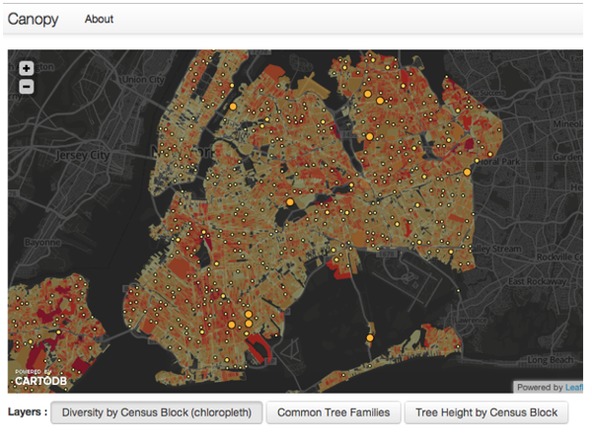Jake Porway at Stanford Social Innovation Review: “…At DataKind, we use data science and algorithms in the service of humanity, and we believe that communicating about our work using data for social impact is just as important as the work itself. There’s nothing worse than findings gathering dust in an unread report.
We also believe our projects should always start with a question. It’s clear from the questions above and others that the art of data storytelling needs some demystifying. But rather than answering each question individually, I’d like to pose a broader question that can help us get at some of the essentials: What do great data storytellers do differently and what can we learn from them?
1. They answer the most important question: So what?
Knowing how to compel your audience with data is more of an art than a science. Most people still have negative associations with numbers and statistics—unpleasant memories of boring math classes, intimidating technical concepts, or dry accounting. That’s a shame, because the message behind the numbers can be so enriching and enlightening.
The solution? Help your audience understand the “so what,” not the numbers. Ask: Why should someone care about your findings? How does this information impact them? My strong opinion is that most people actually don’t want to look at data. They need to trust that your methods are sound and that you’re reasoning from data, but ultimately they just want to know what it all means for them and what they should do next.
A great example of going straight to the “so what” is this beautiful, interactive visualization by Periscopic about gun deaths. It uses data sparingly but still evokes a very clear anti-gun message….
2. They inspire us to ask more questions.
The best data visualization helps people investigate a topic further, instead of drawing a conclusion for them or persuading them to believe something new.
For example, the nonprofit DC Action for Children was interested in leveraging publicly available data from government agencies and the US Census, as well as DC Action for Children’s own databases, to help policymakers, parents, and community members understand the conditions influencing child well-being in Washington, DC. We helped create a tool that could bring together data in a multitude of forms, and present it in a way that allowed people to delve into the topic themselves and uncover surprising truths, such as the fact that one out of every three kids in DC lives in a neighborhood without a grocery store….
3. They use rigorous analysis instead of just putting numbers on a page.
Data visualization isn’t an end goal; it’s a process. It’s often the final step in a long manufacturing chain, along which we poke, prod, and mold data to create that pretty graph.
Years ago, the New York City Department of Parks & Recreation (NYC Parks) approached us—armed with data about every single tree in the city, including when it was planted and how it was pruned—and wanted to know: Does pruning trees in one year reduce the number of hazardous tree conditions in the following year? This is one of the first things our volunteer data scientists came up with:
 Visualization of NYC Parks’ Department data showing tree density in New York City.
Visualization of NYC Parks’ Department data showing tree density in New York City.
This is a visualization of tree density New York—and it was met with oohs and aahs. It was interactive! You could see where different types of trees lived! It was engaging! But another finding that came out of this work arguably had a greater impact. Brian D’Alessandro, one of our volunteer data scientists, used statistical modeling to help NYC Parks calculate a number: 22 percent. It turns out that if you prune trees in New York, there are 22 percent fewer emergencies on those blocks than on the blocks where you didn’t prune. This number is helping the city become more effective by understanding how to best allocate its resources, and now other urban forestry programs are asking New York how they can do the same thing. There was no sexy visualization, no interactivity—just a rigorous statistical model of the world that’s shaping how cities protect their citizens….(More)”
